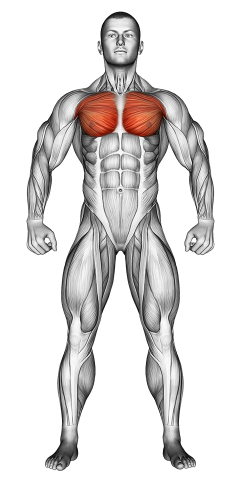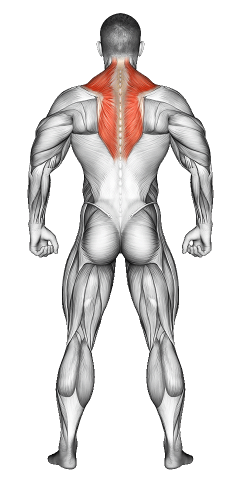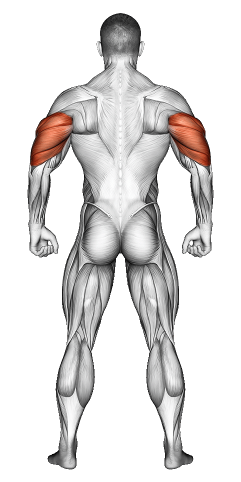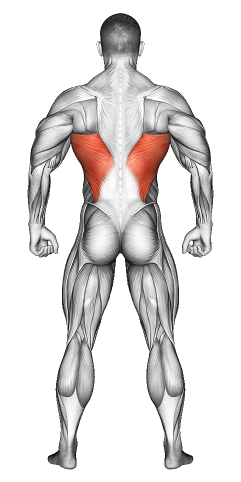Dumbbell Pullover: Video Tutorial & Exercise Guide

Written By: Claude Michael
Updated: Oct 13, 2024
| Workout | Dumbbell Pullover |
| Primary Muscle Group | Chest |
| Secondary Muscle Group | Shoulders, Triceps Lats |
| Equipment Required | Dumbbell |
| Force Type | Push |
| Mechanics | Compound |
| Exercise Type | Strength |
| Difficulty | Intermediate |
Dumbbell Pullover: Video Tutorial & Exercise Guide
- 1.Dumbbell Pullover: Muscle Groups
- -1.1Primary Muscle Group
- -1.2Secondary Muscle Group
- 2.Dumbbell Pullover: Step-by-Step Guide
- 3.Dumbbell Pullover: Overview
- 4.Dumbbell Pullover: Benefits
- 5.Dumbbell Pullover: Pro Tips & Advanced Techniques
- 6.Dumbbell Pullover: Progression Plan
- 7.Dumbbell Pullover: Frequently Asked Questions (FAQs)
Dumbbell Pullover: Step-by-Step Guide
- Step 1: Lie flat on a bench with only your upper back and shoulders making contact, forming a bridge with your body. Keep your feet flat on the floor for stability. Hold a dumbbell with both hands, placing your palms under the inside of the dumbbell plate, arms extended above your chest.
- Step 2: Slowly lower the dumbbell behind your head in a controlled motion, keeping a slight bend in your elbows. You should feel a stretch in your chest and lats as you lower the dumbbell.
- Step 3: Lower the dumbbell until it is about parallel to the floor or as far as your mobility allows without discomfort.
- Step 4: Engage your chest and lats to reverse the movement, bringing the dumbbell back to the starting position over your chest.
- Step 5: Repeat for the desired number of repetitions, maintaining control throughout the entire range of motion.
Dumbbell Pullover: Overview
The Dumbbell Pullover is a versatile compound exercise that targets both the chest and lat muscles, depending on the range of motion and technique. This exercise is popular for improving upper-body strength and flexibility while also enhancing shoulder mobility. The pullover works the pectorals (chest) and latissimus dorsi (lats) simultaneously, making it a unique exercise for building a wide and defined upper body.
By adjusting the focus of the movement, it can either be used for chest development (with a focus on a wider arc) or back strengthening (with a deeper stretch behind the head).
Dumbbell Pullover: Benefits
The Dumbbell Pullover is excellent for developing upper-body strength, particularly in the chest and back. By using a dumbbell, you enhance muscle activation through a full range of motion. This exercise also improves shoulder mobility and flexibility, making it beneficial for both strength and injury prevention.
Additionally, it engages stabilizing muscles such as the core, which are required to maintain balance during the movement. It’s a versatile exercise that can be used to target the chest more effectively by emphasizing the upward part of the movement or the back by focusing on the stretch.
Dumbbell Pullover: Pro Tips & Advanced Techniques
Keep your core engaged and hips elevated throughout the movement to maintain proper alignment and prevent your lower back from arching. Focus on a slow, controlled descent to maximize the stretch in your chest and lats. For added intensity, you can perform the exercise with a pause at the bottom or use a heavier dumbbell to increase the challenge. Ensure that your elbows remain slightly bent to protect your shoulders from strain.
Dumbbell Pullover: Progression Plan
Beginner
Intermediate
Advanced
Dumbbell Pullover: Frequently Asked Questions (FAQs)
What muscles does the Dumbbell Pullover target?
+The Dumbbell Pullover primarily targets the chest and latissimus dorsi (lats), while also engaging the shoulders and core for stabilization.
Can beginners perform the Dumbbell Pullover?
+Yes, beginners can perform this exercise using a light dumbbell to focus on mastering the form and range of motion before progressing to heavier weights.
How can I make the Dumbbell Pullover more challenging?
+To increase difficulty, use a heavier dumbbell, slow down the eccentric phase, or pause at the bottom of the movement to maximize muscle engagement and time under tension.
What common mistakes should I avoid during the Dumbbell Pullover?
+Avoid letting your hips drop or overextending your arms. Keep your core engaged and your elbows slightly bent to protect your shoulders.
How often should I include the Dumbbell Pullover in my routine?
+Incorporate this exercise 1-2 times per week as part of your chest or back workout for balanced upper-body development and improved flexibility.
Share
Don’t Wish for It, Work for It – Join the FlexXP Newsletter Today!
Thank you for signing up for the FlexXP Newsletter!
This site is protected and the Google Privacy Policy and Terms of Service apply.



